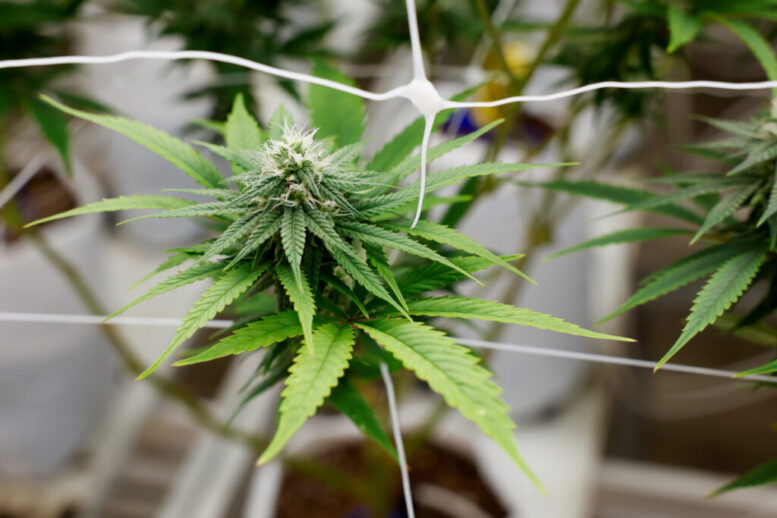BY MEGAN HENRY
Recreational marijuana will soon be legal in Ohio after voters passed Issue 2 on Tuesday. The Associated Press called the election on Issue 2 shortly after 9:30 p.m.
This legalizes and regulates the cultivation, manufacturing, testing and the sale of marijuana to Ohioans 21 and up. It also legalizes home grow for Ohioans 21 and up with a limit of six plants per person and 12 plants per residence, and imposes a 10% tax at the point of sale for each transaction.
The Coalition to Regulate Marijuana like Alcohol is behind Issue 2, which will become law 30 days after the election.
Issue 2 is a citizen initiative, meaning Ohio lawmakers can propose and pass modifications to the new law after the election. Ohio Gov. Mike DeWine, who opposes legalizing marijuana, does not have the authority to veto a proposal-made law via the ballot, according to the Ohio Constitution.
Protect Ohio Workers and Families, the opposition to marijuana legalization, spent the campaign saying Issue 2 would be harmful for Ohioans.
Ohio is the 24th state to legalize recreational use marijuana. Recreational marijuana remains illegal at the federal level and it is a Schedule I drug under the Controlled Substance Act.
Issue 2 establishes the Division of Cannabis Control within the Department of Commerce which will “regulate, investigate, and penalize adult use cannabis operators, adult use testing laboratories and individuals required to be licensed.”
The proposed law requires the Division of Cannabis Control to enter into an agreement with the Department of Mental Health and Addiction Services to establish a program for cannabis addiction services.
Issue 2 creates five funds in the state treasury: the adult use tax fund, the cannabis social equity and jobs fund, the host community cannabis fund, the substance abuse and addiction fund, and the division of cannabis control and tax commissioner fund.
A recent Ohio State University Drug Enforcement and Policy Center study estimates the potential annual tax revenue from legalizing marijuana ranges from $276 million to $403 million in the fifth year of an operational cannabis market.
Issue 2 almost didn’t make it on the ballot after initially coming up short of collecting enough valid signatures. CRMA had 10 days to submit additional signatures under Ohio law and the Secretary of State’s office verified the needed additional valid signatures.
“This step towards cannabis legalization signifies a progressive shift and the beginning of a chapter for the state, reflecting the shifting perceptions of cannabis across America,” Lucas McCann, co-founder and chief scientific officer of cannabis consulting firm CannDelta Inc. said in a statement.
“Ohioans will soon see a bolstered state economy, increased job opportunities, and tax revenue that can be reinvested in Ohio’s aging infrastructure like schools and hospitals.”
Previous efforts to legalize marijuana
Ohio voters struck down a proposed constitutional amendment that would have legalized marijuana in 2015, 64% to 36%.
The 2015 proposed amendment would have created a marijuana monopoly that would have granted “exclusive rights” for commercial marijuana growth, cultivation and extraction to ten predetermined parcels of land.
Medical marijuana
Ohio legalized medical marijuana in 2016, but the first dispensary didn’t open until 2019.
Today, Ohio has 29 active dispensary licenses, but 104 certificates of operation as of Sept. 21, according to the Ohio Medical Marijuana Control Program.
Twenty-three cultivators in Ohio have received Level I provisional licenses and 21 have received certificates of operation. Fourteen have received Level II provisional licenses and 13 have received certificates of operation.
Existing medical marijuana cultivators and dispensaries will have the chance to receive an adult-use license.
There have been 822,760 medical marijuana patient recommendations (a patient can have more than one recommendation), 391,692 patients have registered and 182,068 patients have both an active registration and an active recommendation.





